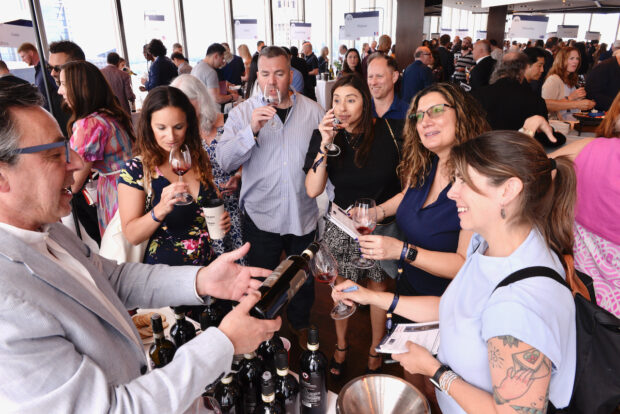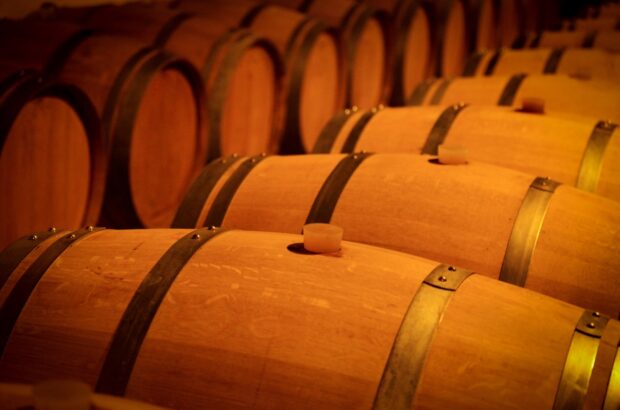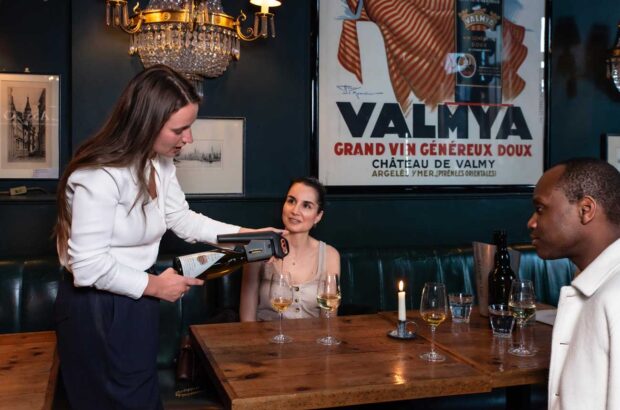Europe’s 2020 wine harvest has got underway relatively early following a warm growing season, but in many areas it is also taking place against a backdrop of lost sales – largely due to the economic impact of Covid-19 lockdowns.
To help make space for the new vintage, and to provide financial support to producers, France, Italy and Spain plan to collectively spend hundreds of millions of euros to distil existing stocks into industrial alcohol. Some reports suggested this could be used to make hand sanitiser.
Not every region has applied to use distillation funding, but other special measures include curbs on production in the 2020 vintage and efforts to find more storage space.
Hugel, the centuries-old wine producer in Alsace, has performed green harvesting – a form of crop thinning in the vineyards – for the first time in more than a decade.
The winery has ‘sacrificed a large proportion of our grapes in the most prestigious terroirs’, said Jean Frédéric Hugel, 13th generation of the winemaker family.
‘More humble terroirs’ were awaiting the same fate, he said in a recent statement.
Green harvesting is not unusual in the wine world, and is considered beneficial in some cases, although Hugel explained to Decanter.com that the family stopped doing it after a change in winemaking strategy.
But he added, ‘2020 is exceptional in the way that we are seeing an expected very high crop in a high quality vintage, with sales at an all-time low because of Covid and reduced appellation production yields.
‘The obvious solution for quality, production, economic and legal reasons was for us [to] green harvest.’
In Champagne, houses and growers recently agreed to maximum yields of 8,000kg of grapes per hectare, or around 230m bottles versus a more regular annual output of 300m-plus.
Brunello di Montalcino producers have also agreed to cut potential output by 12.5% this year, according to a recent Reuters report.
Italy has been working on a state-funded compensation scheme for premium wineries, to encourage some of them to lower yields.
In Spain, where the 2020 harvest was set to be 14% larger than 2019, the government said in July that it would pay €10m to fund winemakers to discard grapes, as part of nearly €92m in emergency aid for the sector.
Many European wineries, including those producing styles for longer-term ageing, have also tried to find extra storage space.
Sales of Chianti Classico rebounded after lockdown, but the area’s wine Consorzio has been encouraging producers to share cellars if stocks are running high.
‘We put in touch wineries that had available space in the cellar with those who would need it,’ said Carlotta Gori, director of the Consorzio Vino Chianti Classico.
In July, the group’s general assembly also agreed to let wineries store wines outside of the classified production zone for 12 months, within the provinces of Florence and Siena.
In France, which is expecting a harvest at around the 45m-hectolitre mark – roughly in-line with the five-year average – the government has promised €250m to aid the wine sector.
Most of this was destined to pay for crisis distillation of existing stocks, but some of the funding will go towards storage, said prime minister Jean Castex.
2020 harvest
In the vineyard, meanwhile, wineries have been racing to recruit and prepare harvesting teams in compliance with Covid-19 health advice.
There is still time for the weather to throw curveballs, and it is impossible to generalise across so many areas, but there was a sense optimism among some producers.
Ornellaia, which started harvesting Sauvignon Blanc and Viognier on the Tuscan coast on 13 August, said, ‘2020 is a year we are unlikely to forget but, in the vineyards of Bolgheri at least, conditions so far this year give hope for an outstanding vintage.’
In Alsace, Hugel agreed that 2020 would remain in the memory, but he added, ‘We are doing all we can to make it more than just the Covid year, but a great vintage worth drinking [for] decades. Nature has rather helped us on that side, so we have our fate in our hands, still.’
In Bordeaux, Vignobles André Lurton has started picking white wine grapes in Pessac-Léognan, while Maison Joseph Drouhin in Burgundy was expected to begin picking on 20 August.
‘If we were to compare years, there are some similarities with 2003 and 2015,’ said the group’s MD, Fredéric Drouhin, in a recent note.
In the Rhône, Nicolas Jaboulet, head of Maison & Domaine Les Alexandrins, said that ‘we [now] have high hopes for the vintage taking shape’, despite pressure from mildew earlier in the growing season and previous concerns that grapes could be scorched in hot summer weather.
Mildew pressure was also particularly high in some parts of Bordeaux and in Roussillon in the south, and lower production in some areas, according to a recent French agriculture ministry report.
France had the second warmest spring for 100 years, the report also said.







